Are Puppies Afraid of the Dark? (the TRUTH Behind Fear)
It’s natural to wonder whether our furry friends experience the same fears that we do. In the case of puppies being afraid of the dark, it’s actually somewhat inherent. Just like humans, dogs have evolved instincts for survival, and being cautious of the dark can be seen as a self-preservation behavior.
For our little canine companions, darkness could mean potential predators or hidden dangers lurking around.
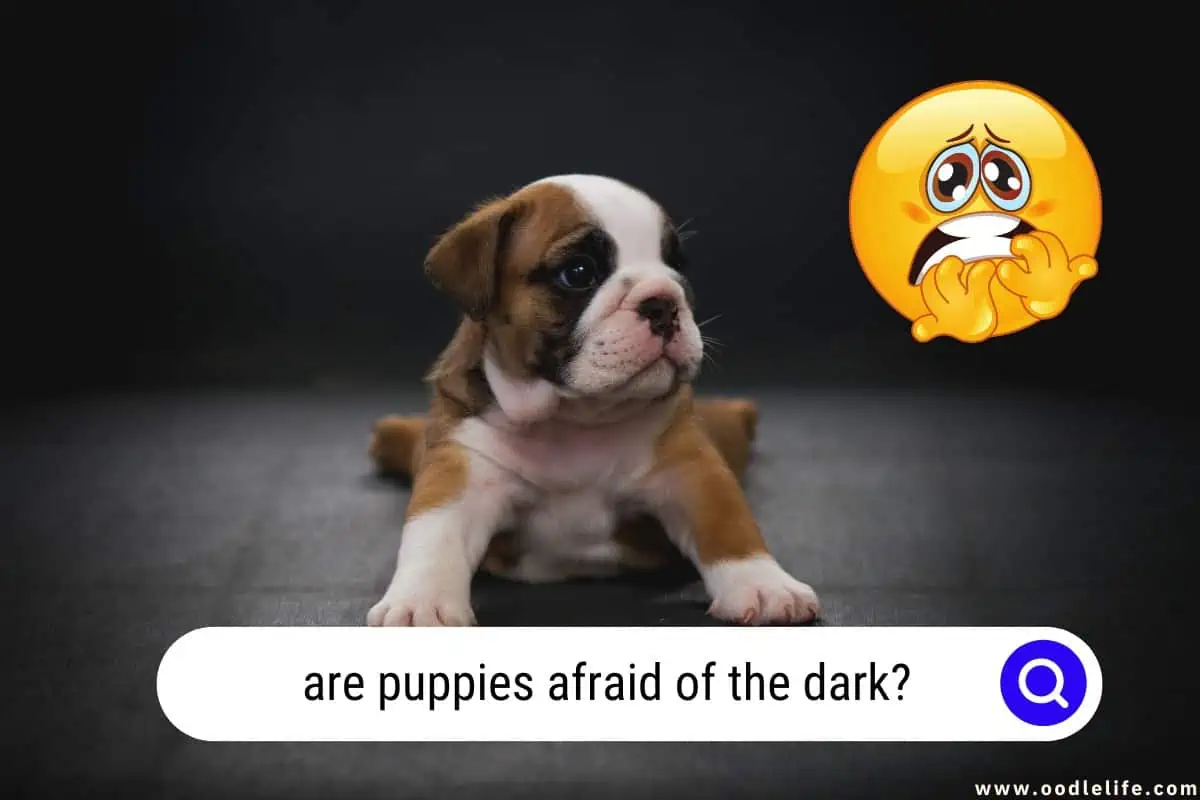
So, it’s actually quite normal for puppies to feel a bit fearful in the dark. Though, of course, not all puppies exhibit the same level of anxiety. With training, socialization, and some positive experiences, most pups will eventually grow out of this natural fear.
How Night Vision Affects Puppies?
Now, before jumping to the conclusion that puppies are completely helpless in the dark, it’s important to consider their vision. While humans rely heavily on their eyes, dogs have evolved to be more adaptable in low-light situations. Their night vision is actually quite remarkable compared to ours.
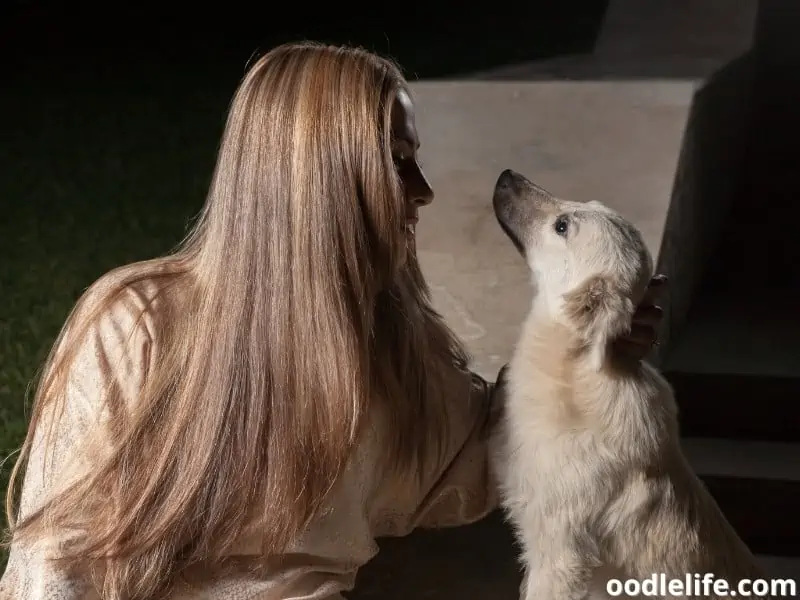
Dogs have a higher concentration of rod cells, the photoreceptor cells responsible for vision in low light, and a larger pupil size, which allows more light to enter. Combined with the ability to dilate, this gives pups somewhat of a leg-up when navigating the darkness.
Photoreceptors in Puppies’ Eyes
One interesting scientific tidbit regarding puppies and darkness is the presence of two main photoreceptor cells in their eyes: rods and cones. Rods are responsible for detecting shades of gray and helping with peripheral vision, while cones are responsible for color vision and sharpness.
In puppies, the ratio of rods to cones is significantly higher than in humans, meaning they can see better in darker environments. However, their color vision is limited to mostly shades of blue and yellow. So even though they might not fully comprehend the concept of darkness, puppies are quite capable of navigating through the night.
In some ways, puppies are like little furry superheroes. Although the dark can be intimidating for them, their powerful night vision eventually helps them overcome this fear. Just remember to be patient and supportive of your puppy’s journey to conquer the unknown realm of darkness!
Signs that Your Puppy is Afraid of the Dark
Physical Signs
One of the first physical signs that your puppy may be afraid of the dark is excessive shaking. If you notice your puppy trembles when the lights go out, this could be a strong indicator of their fear. Another physical sign your puppy might exhibit is a closed posture, like cowering or tucking their tail between their legs.
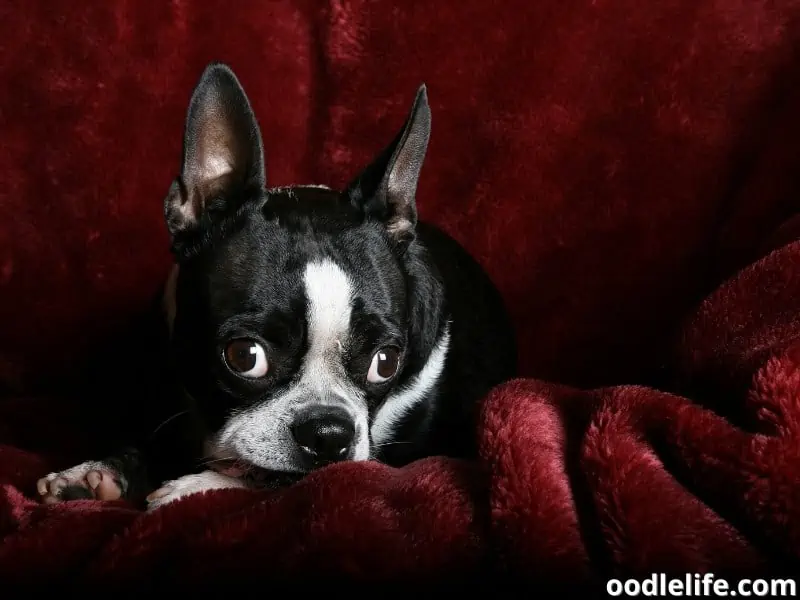
This is your puppy’s way of making themselves appear smaller, a natural reaction to feeling vulnerable in the dark.
Vocal Signs
We all know that puppies have their way of vocalizing their feelings. If your puppy is afraid of the dark, they might start whining or even barking to express their fear. This can be likened to a late-night horror movie scene when you find yourself screaming at the TV for no apparent reason.
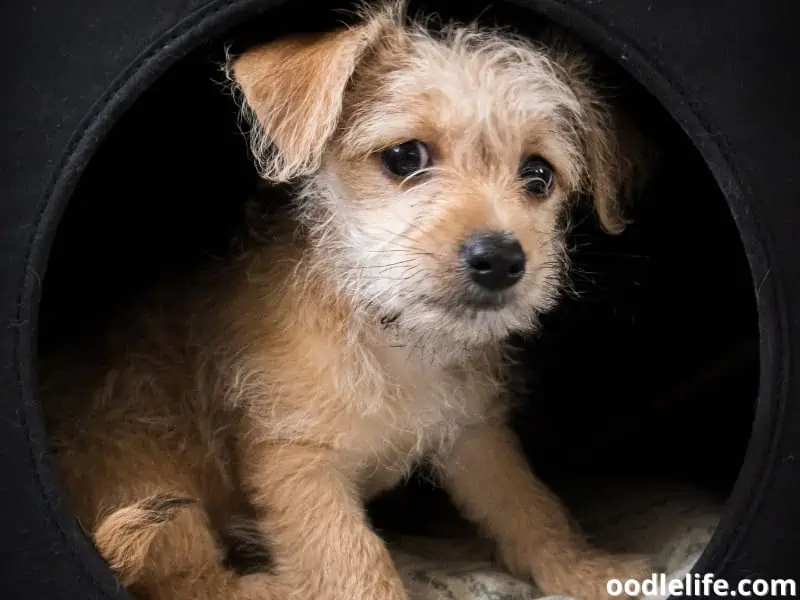
Just like you, your puppy is trying to cope with the scary unknown!
Behavioral Signs
When fear strikes your puppy in the darkness, they might engage in a few different behaviors to soothe themselves or seek comfort. For example, some puppies might start chewing on items like shoes or furniture, which is like stress-eating a whole tub of ice cream after a suspenseful movie. Scratching on doors or trying to escape enclosed spaces is another behavior you might witness.
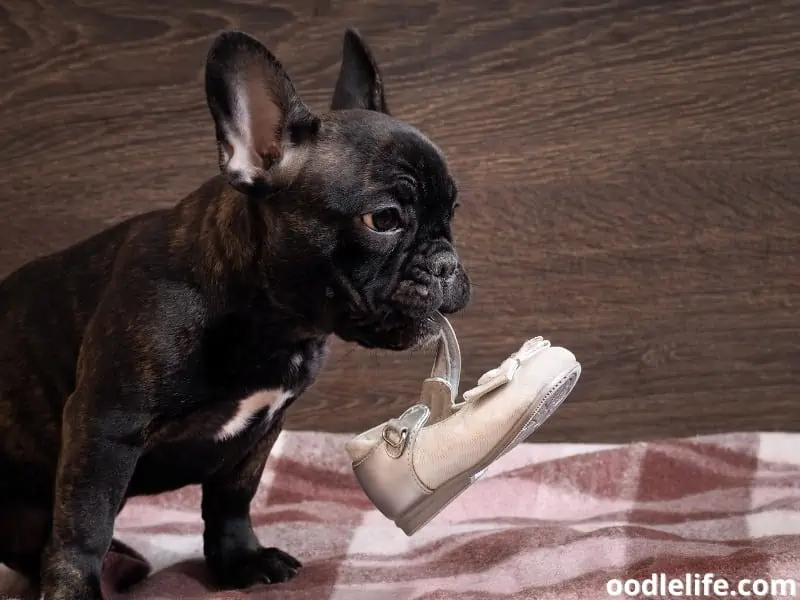
Picture it as you scrambling for the light switch after hearing a bump in the night. Last but not least, repetitive pacing or refusing to settle down can also be an indication that your puppy is uncomfortable in the dark. Imagine being too spooked to lie down in bed after watching a classic horror flick – yup, that’s your puppy!
Causes of Puppies’ Fear of the Dark
Separation Anxiety in Puppies
Separation anxiety can sometimes cause puppies to be afraid of the dark. Some puppies develop this fear if they experience a sudden change in schedule, requiring them to be alone in the dark or if there is a history of trauma. Although this behavior is not restricted to any specific age or gender in dogs, it’s crucial to understand that puppies require comfort and security while adjusting to their new environment.
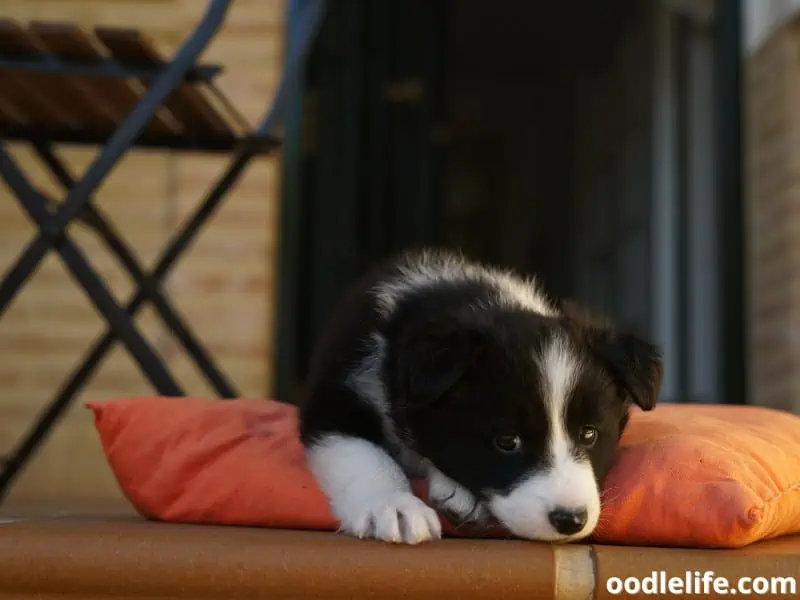
Eyesight Issues
Another potential cause of puppies fearing the dark relates to their vision. Puppies, much like humans, can have issues with their eyesight, and darkness can exacerbate these problems. This could be due to a congenital defect or injury-related vision problems, making it difficult for them to navigate and perceive their surroundings in low-light conditions.

Consequently, it’s essential to monitor your puppy’s behavior in the dark and consult a veterinarian if additional concerns arise.
Fear
Lastly, it’s not uncommon for puppies to be afraid of loud noises and unfamiliar experiences. The dark can magnify these fears since they are unable to see what’s causing the noise or recognize their surroundings. This uncertainty can trigger anxiety, making them more nervous when the lights are out.
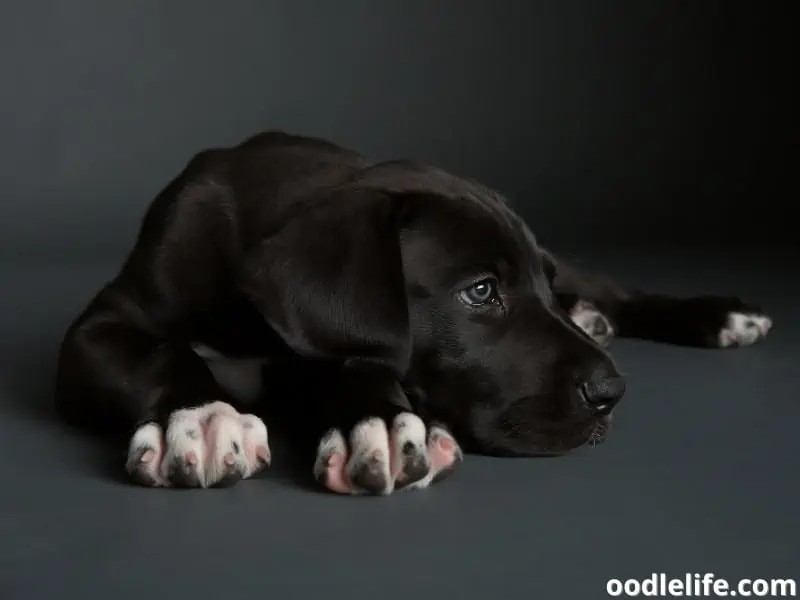
Providing a comforting and consistent environment, like keeping a night light on or playing soothing music, can help put your pup at ease and reduce their fear of the dark. Remember, every puppy has its own personality, and what works for one may not necessarily work for another.
Addressing and Calming Your Puppy’s Fear
Creating a Safe Environment
Puppies, just like people, can be afraid of the dark. Their eyes do have a tapetum, which helps improve their night vision, but that doesn’t mean they’re immune to fear. One way to help your puppy feel more comfortable in the dark is by providing a safe environment.

Using nightlights or dimmers in the house can go a long way in making your puppy feel secure at nighttime. Make sure you scatter them throughout the area where your puppy spends time, but especially near its bed and the path to its water bowl. This way, your puppy will know that even in the dark, you’ve got its back (or tail).
Establishing a bedtime routine can also help. Puppies appreciate consistency, and knowing they can rely on some nighttime rituals can bring them comfort. This might include some playtime, a potty break, and then settling down in a cozy bed with its favorite toy for support.
We all need a snuggle buddy sometimes.
Using Training Techniques
Now that you’ve got the environment covered, let’s talk training techniques. Like with humans, patience is key when it comes to addressing a puppy’s fear of the dark. Trust takes time, and your pup needs to know you’re a reliable source of support.
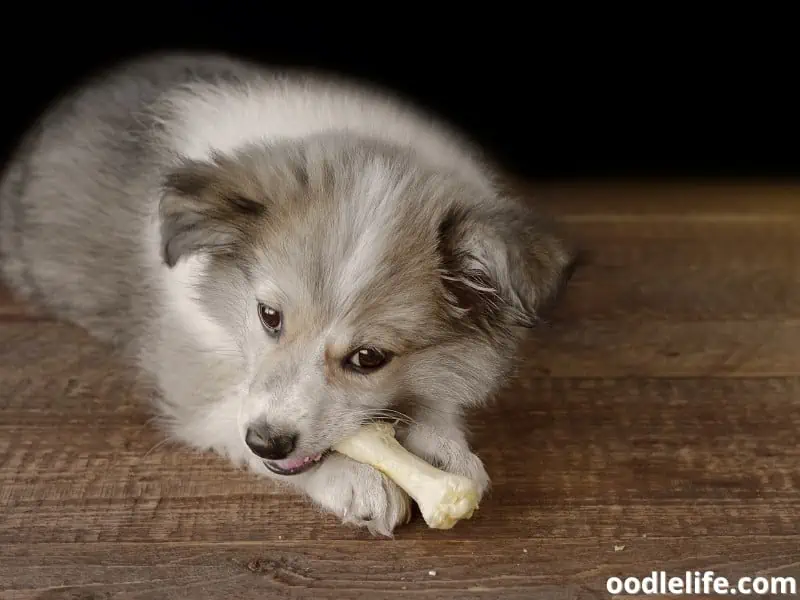
Start by using treats to reinforce positive behavior when your puppy is calm in the dark. Before you know it, they might associate darkness with snack time and their fears will diminish. Just remember not to overdo it with the treats or your brave little pup might end up gaining more than just courage.
Another technique involves gradually desensitizing your puppy to darkness. Start by turning off one light and then rewarding them when they remain calm. Gradually increase the level of darkness and always reinforce their calm behavior.
If you notice your puppy howling, whining, or showing other signs of distress in the dark, don’t worry – Rome wasn’t built in a day, and your brave puppy might take some time as well. Take a step back and adjust, returning to a lower level of darkness or providing extra comfort to help them feel secure.
And there you have it: creating a safe environment and using training techniques will help your puppy conquer its fear of the dark. Nighttime doesn’t have to be scary, and with your support, your pup will be snoozing soundly and confidently in no time.
Preventing Long-Term Issues
Separation anxiety and destructive behaviors can sometimes develop in puppies as a result of fear and insecurity – this might include being afraid of the dark. To prevent these long-term issues, it’s important to address the root of a puppy’s fear and provide them with a supportive and nurturing environment.
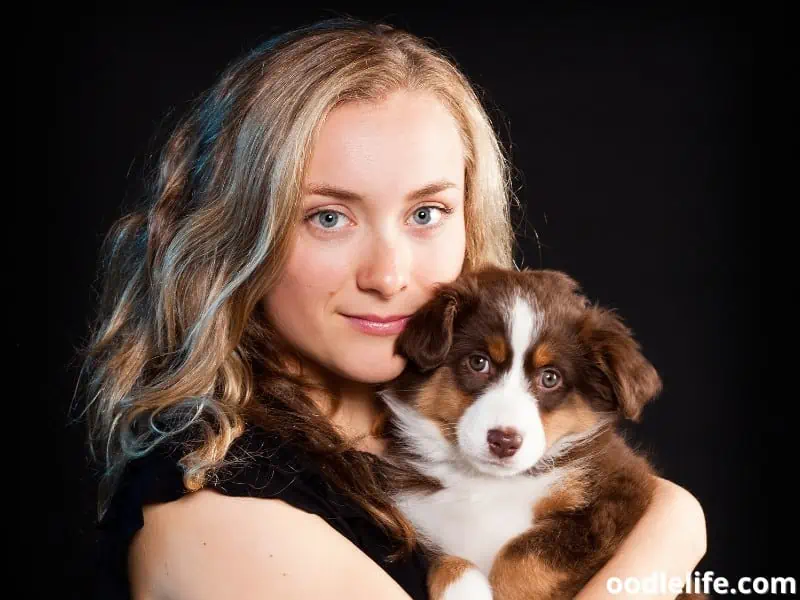
Introduce your puppy to low-light conditions gradually, and make their first experiences with darkness as positive as possible. For example, limit exposure to nighttime stressors (like fireworks) and accompany your dog during evening walks. This will help build their confidence and ensure they associate darkness with enjoyable experiences.
One useful tool for alleviating a puppy’s fear of the dark is a light-up collar. These collars make sure your pup can see and be seen, increasing their sense of security and yours too. It’s like giving them their personal nightlight!
Now, if your dog seems particularly scared when the lights go out, consider using a nightlight in their sleeping area. Although they might not appreciate bedtime stories, they’ll certainly enjoy the comforting glow and extra reassurance that they’re not alone in the dark.
In conclusion, prevention is key. By being vigilant and responsive to your puppy’s behaviors in low-light conditions, you can minimize their fear of the dark and ensure they grow up to be confident, well-adjusted dogs who won’t need therapy for an underlying darkness phobia. Remember, the more secure your puppy feels, the less likely they’ll develop anxiety disorders and destructive behaviors down the line.
So go ahead, light up their world – it’s a small investment with potentially transformative long-term benefits.